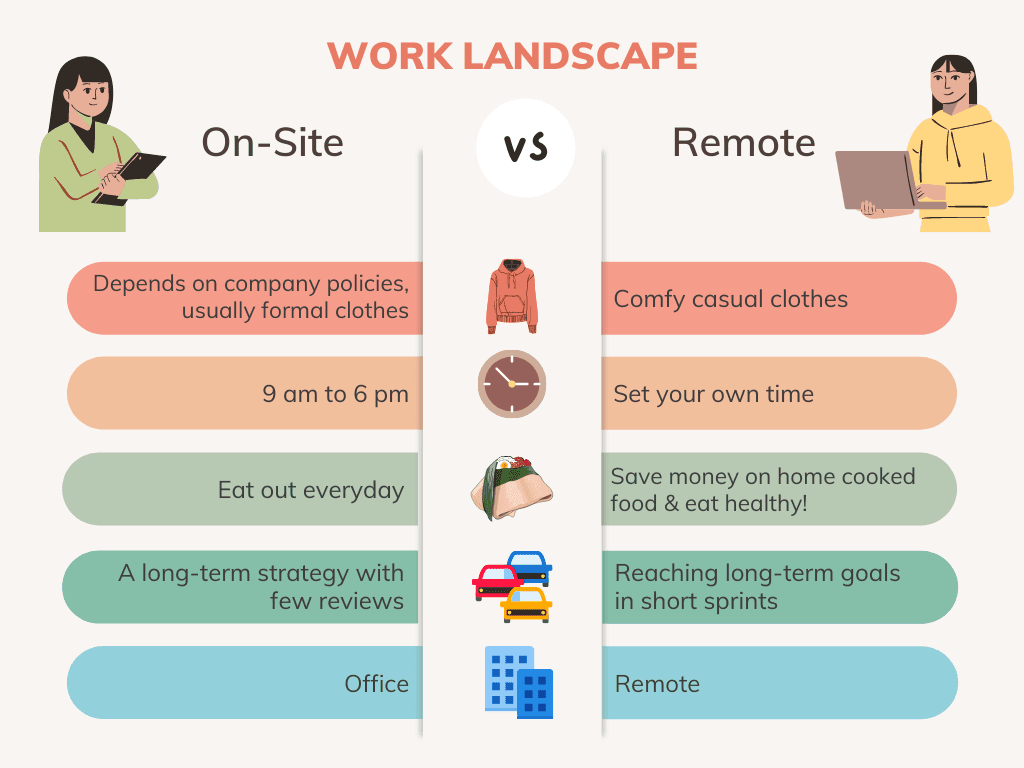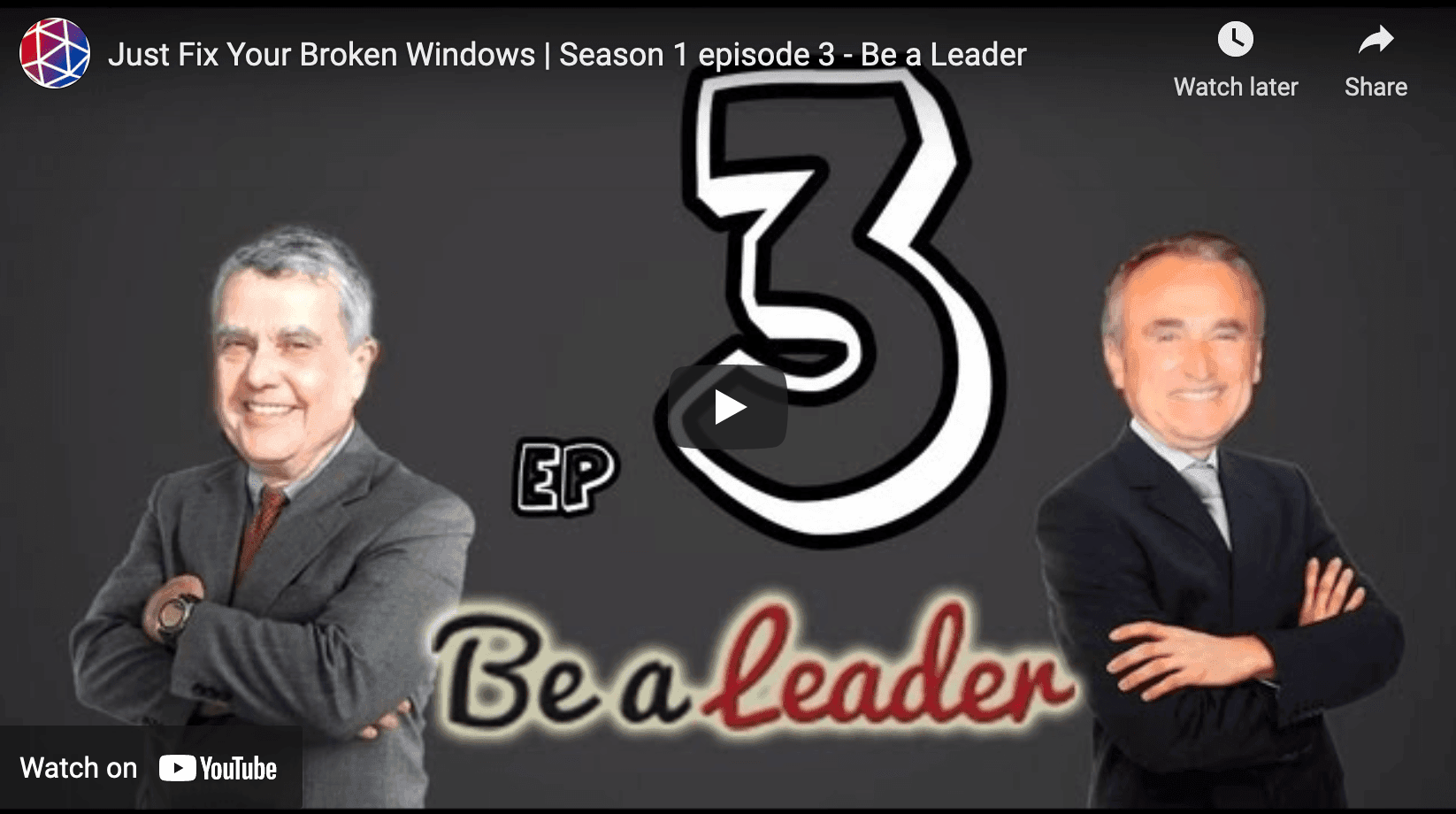The Future of Work is Hybrid

Image by Annie Spratt on Unsplash
As I take my first steps into the working world, I am confronted with a new landscape of the workplace post-Covid. I applied for my first internship job after finishing my thesis and realised that I was met with an array of different types of work landscapes to choose from: on-site, remote and hybrid.

Infographic by Leaderonomics: Differences of On-site and Remote Working
I had many questions to ask myself when deciding what type of workplace I wanted to apply to. Did I want the luxury of working from the comfort of my home or head back into the office for a sense of normalcy after months on end of being cooped up in my bedroom? I opted for remote working in the fear that lockdown regulations would once again ruin another job opportunity.
Related: Making Remote Working Work
However, the process of job hunting had left me thinking greatly about the choice I would have made in an ideal world. I came to the conclusion that the option that appealed to me the most was that of Hybrid working.
Gen Z Navigating the Workspace
Many would think that working remotely would be the ideal option for us “Digital Natives”.
At the start of the pandemic we saw how people struggled to adjust to new technologies to accommodate remote working, but for Gen Z, it seemed almost natural. A click of a few buttons and an intuitive understanding of the platforms made us the teachers to our older generations.
With the biggest obstacle of adaption out of the way, the lockdown allowed many to benefit from:
- Avoiding the peak-hour traffic
- Money saved on transportation
- More flexibility in their work life
- Flexibility in where you work
- Learning new skills at their own pace
So, wouldn’t it have been a no-brainer to stay at home and work?
It’s not that simple. Even UK Chancellor of the Exchequer, Rishi Sunak had advised younger people to go back to the office due to the benefits of having in-person connections. It would allow them to learn directly from mentors and build stronger relationships that just don’t happen across Zoom. These sentiments by Gen Z were clearly echoed in their responses to Microsoft’s survey on hybrid work.
Gen Z has been stuck inside our rooms for the last two years and we are finally beginning the journey of our career that we have dreamed of our whole lives. Despite the benefits of remote work, many do not want to risk lost opportunities of forming connections with future supervisors and colleagues who could guide us to the future we dreamed of.
Hybrid Work
That’s where hybrid working comes into play. As the full brunt of the pandemic begins to ease, lockdown restrictions have become looser, allowing for more flexibility in going back to work. The problem however, is that the pandemic is not over. We are at the stage of the endemic which is something that is not going away anytime soon.
How many times have I heard a friend tell me that they have been sent home from work because someone at the office tested positive? With the recent wave of Omicron, this may keep happening. A solution many teams developed was to rotate which teams come in on which days to limit exposure to co-workers. In a way this creates a hybrid work layout. You are appointed several days where you work from home and a set number of days to come into the office.
As it turned out, post pandemic times have led to working on “worker’s terms” as exemplified by “The Great Resignation” - a result of people’s shifting priorities that they didn’t know they could afford to prioritise until realising that working did not always require going into an office. This realisation is what may allow the future of the workspace to start to diversify beyond the classic on-site work landscape.
Despite the benefits of remote-working, there were obvious drawbacks from the lockdown that were evident with the rising self-reports of burnout. However, with hybrid working, employees may benefit from days of increased independence and flexibility while reducing the chances of burnout triggers caused by working days in isolation.
Recommended Reading: The Right Way to Run Hybrid Meetings
The Practical Issues of Hybrid Working
Let’s take a look at how we can implement a hybrid model to a company to be as productive if not more so than if it were a fully on-site/remote company.
Strategy is tact considering we have a once in a lifetime opportunity to redefine our approach to work.
1) Examine Company Needs
What type of work do your employees do? Not all companies are physically capable of taking on a hybrid model for their company. For example, call centres or customer service may opt for fully remote working. Whereas some occupations would not have the option to remotely work at all - for example, those in the food or construction industry.
So, analyse factors such as physical spaces needed, access to talent and cost of real-estate against the needs of the company to effectively work when deciding between the different work landscapes.
2) Organisational Norms
Companies need to carefully navigate who works remotely and on site and for how many days of the week. If we do not strike the right balance, we risk falling into the trap of either remote working or on-site working.
For example, if most employees are only working remotely one day a week, there is a valid assumption in thinking they are getting sufficient social interaction. On the other hand, does this create a norm for working on site, creating a preference for in-person collaboration? Too few remote days may also negate the advantages of flexibility that remote working provides. Furthermore, if there is only a single day of remote working, it may be perceived as an extra day-off instead of building a routine that it is a workday.
Inversely, what if remote work was happening 4 days of the week? Would there be issues of establishing team culture amongst the employees? Would they lose out on the feeling of being part of the group, resulting in loneliness at the workplace? To counter this, companies could try instilling the norm that Fridays are a time for everyone to catch up in the office for a team lunch or team building exercise.
These organisational norms are important to consider when trying to balance remote working and on site working.
3) Don't Micromanage
The beauty of hybrid work is that leaders and managers have trust in their employees to make decisions for themselves while still being a contributing member of the company. It is this trust from their leaders that will allow your employees to feel a sense autonomy.
Avoid micromanaging even if you are tempted to check if your employees are doing something related to work every minute of every day. Micromanaging results in the employee losing the benefits of the hybrid model (independence, autonomy and flexibility). Realise that your employees have responsibilities outside of work and that they know best how to manage their time. If you respect that, they will feel a sense of gratitude towards you, making them loyal employees.
Setting Gen Z Up for Success
The pandemic has allowed us to learn about the flexibility and variety of the different work landscapes, allowing us to look towards how hybrid working may be our future which would help us escape the downfalls of both on-site and remote working.
While this statement may apply to all, let us take note of how Gen Z's unique perspective shapes their views of hybrid working. It's time to realise they aren't our future anymore. Gen Z is here and it's time to expand our horizons on what the work landscape should look like in the future by incorporating the hybrid model.
Another useful tip if you're implementing hybrid or remote working is that you can keep track of how your employees are feeling with technology like Happily (or Budaya for those from Indonesia). It has amazing analytics and also provides activities for employees to be fully immersed in the organisation's culture.
To find out more about Happily, click here or email info@leaderonomics.com
Business
Tags: Business Model, Transformation & Change, Organisational Challenges
Nadine is a compassionate and determined young woman who enjoys her time exploring her creative side. She thrives on building meaningful relationships through taking an interest in insightful conversations with the people she meets. Whilst in her last semester of university as a psychology student she is undertaking her internship with the editorial team in Leaderonomics, taking time to dabble in different fields before pursuing a Masters in psychology.





